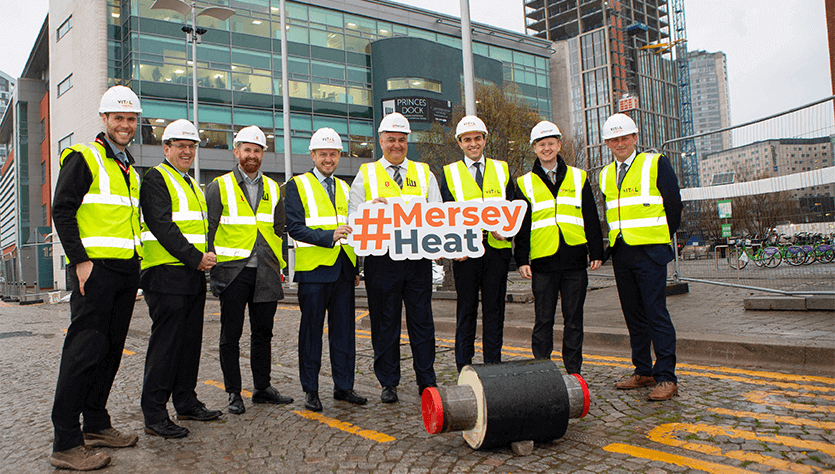Peel L&P’s Liverpool Waters is a 30-year vision to transform the city’s northern docks, bringing the 60-hectare site to life once again, creating a bustling, lively, attractive place to live and work across five different neighbourhoods. Regeneration business, Peel L&P has embedded sustainability across its the £5bn waterfront scheme and appointed us to a development agreement which will see us conceive, design and create the heat energy infrastructure. The project, when finished, will create a seamless extension to Liverpool’s City Centre which extends over 2km along the banks of the River Mersey and will account for 20 million square foot of mixed-use development and include 9,000 residential units. Heat and hot water will be provided via the Mersey Heat district heating network served by an innovative Water Source Heat Pump energy centre.
We were appointed to the project utilising a Project Development Agreement which allowed us to begin with a “blank piece of paper” and work collaboratively with Peel L&P’s Peel NRE team and their advising district heat network development consultants, Ener-Vate Ltd. This allowed us to develop an energy solution which met the technical requirements of the site, but also the commercial, financial and environmental needs of the client.
We worked with the client’s 30-year masterplan to create a phased solution which would meet the energy needs of the development at each stage and supported the client in developing the commercial model for Mersey Heat, the ESCo which will operate the network.
Our team developed the concept for the energy infrastructure, progressed the design through the RIBA plan of work stages and oversaw the construction and engineering of the project.
Vital Energi are responsible for the complete service delivery of the project from design, build, operate, maintain, billing and customer service.

We began at the pre-concept stage, helping the client to understand their energy demands by creating a model from their masterplan accommodation schedule. Once this model was complete, we were able to design a technical solution, whilst supporting the ESCo to develop their commercial model.
As the development agreement process is collaborative in nature, we worked in partnership with Peel NRE to ensure the solution met their needs, including their carbon reduction ambitions. As our designers progressed the project through the RIBA stages our team produced cost plans, financial models and construction schedules, all of which were discussed and modified in consultation with the client. The result of this was that the RIBA Stage 4 design and construction programme integrated seamlessly into the larger development.
Phase 1 will deliver approximately 11 gigawatt hours of heat energy to existing buildings situated on the Liverpool Dock Waterfront and this will be supplied by a temporary energy centre using boilers. Once demand increases, heat will be supplied from a permanent energy centre which has been designed to expand alongside the development build out.